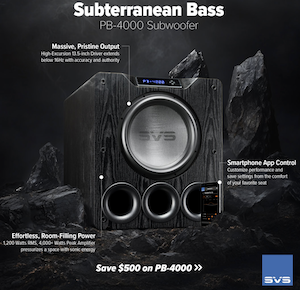@John Mulcahy, hi. I was wondering if all of the "configuration data" associated with a given measurement is saved. I asked because I'm trying to figure out an oddity with a couple of measurements I took earlier this year, and for the life of me it almost looks like I used the wrong CAL file for my UMIK-1 for those measurements (90 deg instead of 0 deg) - at least that's the only way I can figure it without seeing all of the configuration data associated with those Sweep captures. Is that data available somehow?
-
AUDIO VIDEO PROCESSING, SETUP & ENVIRONMENTOfficial REW (Room EQ Wizard) Support Forum Audiolense User Forum Calibration Equipment Auto-EQ Platforms / Immersive Audio Codecs Video Display Technologies / Calibration AV System Setup and Support Listening Room / Home Theater Build Projects Room Acoustics and Treatments AV Showcase Movies / Music / TV / Streaming
-
AUDIO VIDEO DISCUSSION / EQUIPMENTHome Theater / Audio and Video - Misc Topics Essence For Hi Res Audio AV Equipment Advice and Pricing Awesome Deals and Budget AV Equipment AV Receivers / Processors / Amps UHD / Blu-ray / CD Players / Streaming Devices Two Channel Hi-Fi Equipment DIY Audio Projects Computer Systems - HTPC / Gaming HD and UHD Flat Screen Displays Projectors and Projection Screens AV Accessories Buy - Sell - Trade
Navigation
Install the app
How to install the app on iOS
Follow along with the video below to see how to install our site as a web app on your home screen.
Note: This feature may not be available in some browsers.
More options
You are using an out of date browser. It may not display this or other websites correctly.
You should upgrade or use an alternative browser.
You should upgrade or use an alternative browser.
John, how much data is saved with each REW measurement?
- Thread starter tony22
- Start date
John Mulcahy
REW Author
- Joined
- Apr 3, 2017
- Posts
- 8,491
If you look on the Info panel it will show any cal files used for the measurement. You can see the frequency response of the cal files on the SPL & phase graph. You can change the cal file using the Change cal button or action.
Right in front of me the whole time.If you look on the Info panel it will show any cal files used for the measurement. You can see the frequency response of the cal files on the SPL & phase graph. You can change the cal file using the Change cal button or action.
Attachments
John Mulcahy
REW Author
- Joined
- Apr 3, 2017
- Posts
- 8,491
If you were really playing both speakers, as the L+R output setting suggests, then even extremely small differences in mic position can have a large effect at high frequencies. You also have an FDW for one measurement and not the other.
FDW?If you were really playing both speakers, as the L+R output setting suggests, then even extremely small differences in mic position can have a large effect at high frequencies. You also have an FDW for one measurement and not the other.
John Mulcahy
REW Author
- Joined
- Apr 3, 2017
- Posts
- 8,491
Frequency Dependent Window, that's why the name shows [FDW] in the graph legend.
Ah, right. That capture was from a set of measurements I used to create convolution files for Minimstreamer. But that shouldn't affect what I'm seeing with these differences, should it? (at least for FR - yes I guess it will affect what I see in Filtered IR) As to the mic position, I use a laser measuring tool (very precise) to insure that for each measurement to mic height and distance from front wall (where a target is placed) does not vary by even 1/16" inch.
John Mulcahy
REW Author
- Joined
- Apr 3, 2017
- Posts
- 8,491
Nonetheless the measurements only differ meaningfully above around 7 kHz, once the windowing is set the same and smoothing is minimised. That is typical of a high frequency cancellation, either between the direct signals from the speakers or due to a reflection from some difference in the environment. It is not a good idea to measure both speakers at once.

Got it. Certainly for developing convolutions I do separate L and R channels, and for doing detailed acoustical measurements (I've worked with John Dykstra at GIK in the past). Once in a while though doing a "quick" two channel measurement is... well, quick. 
Popular tags
20th century fox
4k blu-ray
4k uhd
4k ultrahd
action
adventure
animated
animation
bass
blu-ray
calibration
comedy
comics
denon
dirac
dirac live
disney
dolby atmos
drama
fantasy
hdmi 2.1
home theater
horror
kaleidescape
klipsch
lionsgate
marantz
movies
onkyo
paramount
pioneer
rew
romance
sci-fi
scream factory
shout factory
sony
stormaudio
subwoofer
svs
terror
thriller
uhd
ultrahd
ultrahd 4k
universal
value electronics
warner
warner brothers
well go usa












